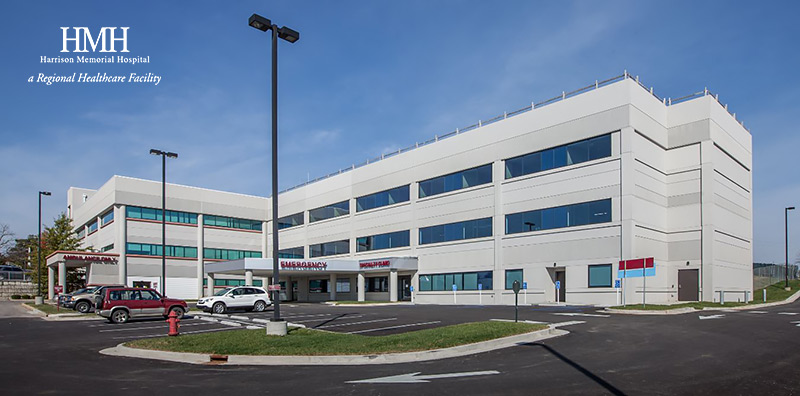An interview with Steve Matheson, Vice President of Product and Sales in North America
As BridgeHead Software continues to celebrates its 25th anniversary, we asked Steve Matheson, Vice President of Product and Sales in North America, to look back on his 10-plus years at the company and talk about the specific healthcare challenges the industry faces in the future.
What technology has excited you must over the last 25 years?
From a market perspective, there have been big changes over the last 25 years. The move to cloud is the most exciting for me, it’s had a huge impact on healthcare organizations across North America; and has happened at a rapid pace – more than anything else I’ve ever seen.
Most memorable customer win and why?
 For me it’s Harrison Memorial Hospital. The team are very ambitious and keen to provide as many high-quality healthcare services to patients as possible. We had worked with the hospital previously, providing backup and recovery solutions for their primary applications, and built up a good relationship with Harrison’s CIO, Martha Sullivan. After seeing a demonstration at MUSE in 2017, the hospital decided that HealthStore® (BridgeHead’s Independent Clinical Archive) was the right solution for them to extract, consolidate, store and protect data from six inherited ambulatory EMRs from recently acquired healthcare practices (which they would then decommission). But, critical to this project was Harrison’s need to provide clinicians and support staff access to all of this data, as part of the longitudinal patient record, from their primary MEDITECH EHR. Harrison went on to sign a deal with us, the project was an enormous success and it became one of our flagship HealthStore customers in the US.
For me it’s Harrison Memorial Hospital. The team are very ambitious and keen to provide as many high-quality healthcare services to patients as possible. We had worked with the hospital previously, providing backup and recovery solutions for their primary applications, and built up a good relationship with Harrison’s CIO, Martha Sullivan. After seeing a demonstration at MUSE in 2017, the hospital decided that HealthStore® (BridgeHead’s Independent Clinical Archive) was the right solution for them to extract, consolidate, store and protect data from six inherited ambulatory EMRs from recently acquired healthcare practices (which they would then decommission). But, critical to this project was Harrison’s need to provide clinicians and support staff access to all of this data, as part of the longitudinal patient record, from their primary MEDITECH EHR. Harrison went on to sign a deal with us, the project was an enormous success and it became one of our flagship HealthStore customers in the US.
What makes BridgeHead the ‘go-to’ data management provider for healthcare?
There are a couple of things. Firstly, there are differences between us and other data management providers on the market. We only build products for healthcare and that, by itself, means that our offering is tailored to addressing the specific problems and challenges that healthcare delivery systems face. Our specialism in healthcare is a differentiator for us and that’s a big reason why customers come to BridgeHead.
The second is that whether we’re selling in Europe, Australia or the United States – we understand that what we do has consequences. As a result, the whole organization, from sales and support to engineering; recognizes that we have to keep systems available and running flawlessly. Our sole dedication to the healthcare market means that we know just how critical it is to have products that are properly supported. All of this gets factored into the everyday interactions we have with our customers and the approach we take to developing our solutions. But, it’s also a major reason why we have one of the highest customer retention rates I have experienced in my career.
What is the main pain point you are helping customers solve?
20 years ago healthcare was all paper-based. With the introduction of digital systems, it’s important that everyone is able to easily use new software – without much training. We know that healthcare settings can be very diverse: they range from physicians practicing in their own offices; hospitals with hundreds of staff; medical imaging centres; nursing homes; and rehabilitation centers. When we built HealthStore, we built a product that solves problems for everyone. HealthStore helps in the delivery of healthcare across an array of specialities and settings, bringing data together to enable clinical and support staff to deliver the best possible patient care.
How do you see that pain point evolving?
The biggest change coming to the healthcare industry is the participation of individuals in their own wellness. As devices like smart watches and fitness trackers become more prevalent, patients will be creating and supplying healthcare providers with their own medical data. The single biggest challenge here is going to be harnessing that data and making it usable for healthcare organizations and providers.
What changes are going on in the US healthcare technology landscape?
In the US right now there are lots of changes happening. The biggest is that the funding model and the delivery of service model are both shifting at the same time and pace, while technology continues to evolve. For instance, many hospitals are being purchased by other hospitals; physician practices are also being purchased by hospitals and sometimes imaging centers. As a result, organizational structures are altering at a very dynamic rate.
The other thing that’s changing is the way that healthcare professionals such as physicians, dieticians and surgeons get paid. Moving from a ‘fee-for-service’ model to a ‘quality of care’ model is very disruptive because the billing model is dramatically changing. Simultaneously, providers are implementing new technologies (e.g. cloud, mobile devices, etc.) all at once. It’s a challenge because patients are now becoming consumers and healthcare delivery is now taking on a more business-like stance.
Most memorable moment with BridgeHead?
A moment that really sticks out for me is when I attended our annual kick-off meeting in 2014. I flew over to our headquarters in the UK and it’s a chance for the whole company to come together. I remember walking into the first session that morning and being surprised at how many people filled the room, all of a sudden it hit me that we’d grown and it was great to see how big the company had become – it’s been a pretty amazing journey!
Describe what BridgeHead means to you
The best place I’ve ever worked and the place I’ve worked the longest.
Are you looking to extract, consolidate, store and protect data from your healthcare applications?
Whether its applications you have recently replaced, such as an EHR; or legacy systems you would like to decommission; our latest Best Practices Guide on ‘Managing the Cost, Complexity, and Risk of Legacy Application Retirement and Replacement’ offers insight into how you can still provide access to clinical, financial, and/or operational information, whilst reducing the cost and risk associated with duplicate and legacy systems.



